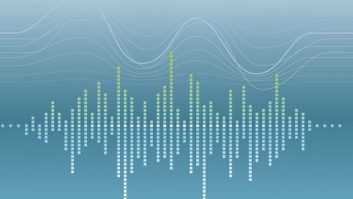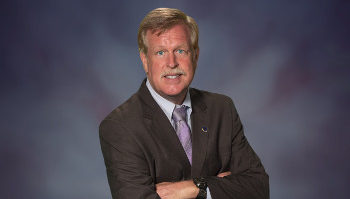The author is director of engineering for Crawford Broadcasting.

iStockphoto/shaunl As I have followed the print and online news pieces and commentary about the FCC’s AM Revitalization Report and Order and FNPRM, I have found the disparate viewpoints to be fascinating. Some say the proposed changes don’t go far enough. Some say they go too far. Yet others seem to be satisfied with what has been proposed.
I have my own opinions on the various facets, colored no doubt by my own and my company’s interests; but I do think I see the big picture. The question to ask for each proposed change must be: “Is this good for the overall health and well-being of the AM broadcast medium?”
In an effort to answer that rather subjective question, let’s take a walk through the NPFRM and see what the FCC has proposed and asked in each section.
CLASS A
First, and rightly so in my view, is a proposal to modify AM protection standards, and first among those standards proposed to be changed is Class A nighttime and critical hours protections.
We all very likely know the history and the arguments with respect to Class A night/critical protections, so I won’t belabor them. The question being asked, in essence, is whether in this day and age the protections afforded Class A stations are appropriate and in the public interest.
The FCC concludes that the co-channel 100 uV/m groundwave contour and first-adjacent channel 0.5 mV/m groundwave contour protections now afforded Class A stations are appropriate, day and night. It also concludes that critical hours protection of Class A stations should be eliminated. There are a couple of interesting points here.
What is not dealt with in a firm proposal is nighttime skywave service contour protection for Class A stations. This is, without a doubt, the proverbial “elephant in the room,” the one Class A protection that has the greatest impact on co-channel stations. It is interesting that until very recently, only iHeartMedia has been vocal on the issue. I think that we are going to have to deal with this issue in this proceeding, one way or the other.
The other interesting point that I noticed is that the FCC contradicts itself in the proposal to maintain the 100 uV/m and 0.5 mV/m groundwave contour protections. Later in the notice the FCC proposes increasing the daytime primary service contour for all except Class A stations to 2 mV/m in order to “overcome increased environmental noise.”
While we all likely understand that Class A stations often play a unique role in emergency communications and situations, if signal levels below 2 mV/m are not useful because of environmental noise for all other station classes, is there something different for Class A stations?
RSS
Next on the list of proposed changes to AM protection standards is a change in the nighttime RSS calculation methodology. Without getting into the specific math involved, back in 1991 the FCC overhauled the AM protection rules, and one of the changes was to lower the threshold for stations considered as interfering to other stations to a 25 percent exclusion (it had been 50 percent) and to include first-adjacent channel stations in the interference calculations. This was in an effort to keep interference levels from climbing, but it did not work. Instead, it handcuffed stations and in many cases made it impossible to produce “interference-free” principal community coverage. In some other cases it actually resulted in more real interference to stations.
The FCC recognizes all of this in the NFPRM and proposed to roll back the 1991 rule changes having to do with RSS calculation methodology, restoring 50 percent as the exclusion level and eliminating first-adjacent channel stations from consideration in night interference calculations. This is a very good thing and I believe most all commenters will support it for obvious reasons.
DAYTIME PROTECTIONS
Moving on down the list we come to the aforementioned change in daytime protection to Class B, C and D stations.
There are several proposed changes in this section, including rolling back changes implemented in 1991. These include returning to a 0 dB (1:1) ratio for first-adjacent channel stations, changing the second-adjacent channel ratio to 0 dB (1:1), and eliminating third-adjacent channel protection altogether. These are all good and they will do away with a lot of grandfathered overlaps, particularly with respect to first-adjacent channel stations, that were created as a result of the 1991 rule change.
The other big proposal in this section is a change in the daytime primary service contour for all except Class A stations from 0.5 mV/m to 2 mV/m.
Again, the reason given for this proposal is to overcome increased levels of environmental noise. I generally see this as a good thing and I personally will support it (I actually proposed this change some 25 years ago in comments), but I also see that it can have a detrimental effect on some stations that are unable to take advantage of the change to increase power and/or modify their directional patterns. It can and will also have a detrimental effect on high-power Class B and Class D stations, since those already operating at 10 or more kW won’t have the headroom to make the 12 dB power increase. I really expect a wide spectrum of comments on this proposal.
AM ON FM
The next section in the NFPRM has to do with siting FM cross-service fill-in translators (known in the biz as “AM on FM”). Currently, such translators must have their 1 mV/m contours completely within the lesser of the parent AM station’s 2 mV/m contour or a 25-mile radius centered on the AM site. This is a real problem especially for AM stations with their transmitter sites located some distance outside of town.
The FCC proposes to change the rule to the greater of those same two criteria instead of the lesser. This would be perfect, if the FCC hadn’t also thrown in another restriction that the translator’s 1 mV/m contour cannot extend beyond a 40-mile radius centered on the AM site.
That restriction is going to be a killer for stations with a large 2 mV/m contour radius. Why shouldn’t an AM station that puts a 2 mV/m contour over a community 50 miles away be able to site a fill-in translator in that community? Hopefully we will see a lot of comments in support of the “greater of” change but in opposition to the 40-mile restriction.
PROVE IT!
The next two sections have to do with proofs.
First, the FCC proposes to further pare down the partial proof requirements to include only monitored radials (i.e. those radials that have a licensed monitor point on them). The current partial proof rule requires that adjacent radials also be included if there are fewer than four monitored radials.
This is a good proposal and will reduce the burden on and costs to many AM licensees, a good number of which may be avoiding running a needed partial proof because of the trouble and costs.
Then the FCC deals with a laundry list of items with respect to method-of-moments (MoM) proofs and recertifications. Since the MoM proof rules went into effect in early 2009, we as an industry (and consulting engineers in particular) have learned a great deal about what in the MoM rules works and what doesn’t, what’s necessary and what isn’t. Many of these items were dealt with in a public notice a few years ago, and I won’t deal with them here. The FCC seeks to codify these changes.
There is one change that commenters to the AM revitalization NOI requested that is specifically not proposed in the NFPRM: elimination of the requirement for reference field strength measurements.
Having done a lot of MoM proofs and recertifications over the last almost seven years, the one thing that takes the most time is making the reference field strength measurements. There is no requirement for maintaining any specific field strength or cap in the rules, so the measurements are really pointless. I can understand and perhaps even support making the measurements as part of the initial proof. That makes the fields part of the permanent record so that engineers can at least see if things are in the ballpark when there is a question. But the requirement to repeat the measurements in the biennial recertification should be dropped. It is a big waste of time, effort, money and fossil fuel.
LAST BEST CHANCE
Finally, the FCC has at long last gotten around to proposing that those expanded band licensees who requested and received waivers of the requirement to submit either their parent regular band or expanded band station license make a choice and submit one or the other for cancellation.
My personal feeling is that this is a very good thing. Part of that stems from the fact that my company complied with the sundown rule in a timely manner and submitted its standard band parent station license. Another part is simply a desire to see the migration to the expanded band complete. Arguably those 25 expanded band licensees who have held onto their standard band parent station licenses have not migrated. I hope we can wrap this up and perhaps, as the notice of inquiry that follows the NFPRM suggests, open up the expanded band for further development.
These proposed AM rule changes without a doubt represent our “last best chance” to revitalize AM. With them we have the opportunity to reshape the allocation picture on the AM band, improve both coverage and signal levels within coverage areas, open more opportunities for AM-on-FM cross-service translators, streamline partial and MoM proof procedures and reduce the burdens thereof, and wrap up the expanded band migration.
I would encourage all AM licensees to jump in with comments. Believe it or not, the FCC really does listen.
The author is a longtime Radio World contributor. In 2007 he received the Robert W. Flanders Engineer of the Year award from the Society of Broadcast Engineers; this spring SBE elevated him to its membership rank of Fellow.
Comment on this or any story. Email [email protected].











